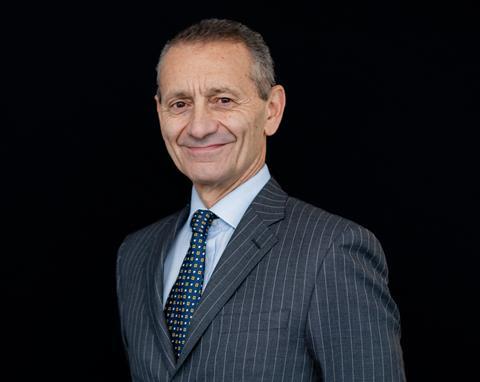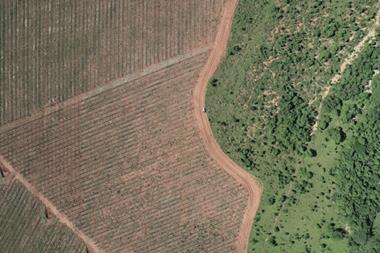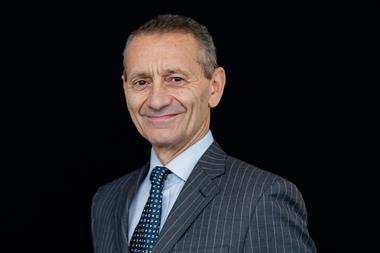A senior advisor to the Taskforce on Nature-related Financial Disclosures (TNFD) has said that environmental scenario analysis risks being “an expensive waste of time” if done badly.
Speaking to an audience of more than 700 yeysterday, Simon Zadek acknowledged that most market practitioners being asked to work with climate and nature-related scenarios find them “incomprehensible” and “generally unhelpful”.
Zadek, a veteran in sustainable finance and co-chair non-profit NatureFinance, said it was a “collective challenge to make them useful”.
“If one gets it wrong […] they can be obtuse, far too technocratic, far too abstract, far too conceptual, far too far into the future, not really locking into the business models of the organisations using them,” he added.
The comments come amid a growing push by policymakers, regulators, financial institutions and civil society to work out how to better understand the future financial impact of changes to the planet’s ecosystems.
Yesterday’s webinar, hosted by the TNFD, sought to explore ways that nature scenarios could be developed and integrated into institutions’ existing climate scenarios. The Taskforce will close a consultation on Friday on its proposed approach to the topic.
“We’re trying to make sure we don’t make the same mistakes with nature scenarios that we did with climate ones,” said Nicola Ranger, director of Oxford University’s Resilient Planet Finance Lab, who was also speaking on the panel.
Climate scenario analysis is now required by many financial regulators, and is a core component of the recommendations of the Task Force on Climate-related Disclosures, but there have been teething problems with the flagship models.
In addition to having to correct a number of factual mistakes, the scenarios created by central banking body Network for Greening the Financial System (NGFS), for example, take a narrow view on what the future could look like under different temperatures.
“They don’t take into account extreme weather,” Ranger told IPE. “And they don’t allow you to test for things like big changes in oil prices, which we’ve seen in recent years can have huge implications for investment portfolios.”
Prudential regulation vs strategic asset allocation
As well as trying to learn from these mistakes, TNFD has been coordinating its efforts with the NGFS, which is working on nature scenarios for central banks and supervisors.
The taskforce said it’s keen to develop an “approach that conceptually connects the macro-prudential level scenarios being advanced by the NGFS with the institution-level scenarios recommended by the TNFD”.
Ranger noted that regulators and investors “require slightly different, but overlapping” things from their scenarios: while regulatory scenarios are often closer to stress-tests – considering more extreme, high-level risks – investors need more granular models that can capture future opportunities across different sectors too.
Riccardo Rebonato is scientific director of the Climate Impact Institute at EDHEC Business School, where he works closely on climate scenarios.
He said that one of the biggest issues with the current landscape is the models being used by much of the market, which are often based on the reports from the Intergovernmental Panel on Climate Change (IPCC), don’t adequately accommodate for those different needs.
“The existing scenarios haven’t been created with investors in mind,” he believes, adding that some of those developed by IPCC “are seen by climate scientists and economists as almost impossible”.
“Investors find themselves with this wide range of climate scenarios and no idea which ones should be taken seriously”
Riccardo Rebonato, scientific director of the Climate Impact Institute at EDHEC Business School
Policymakers may need to consider these more extreme options – a report published by the Institute & Faculty of Actuaries earlier this month urged lawmakers and financial regulators to do just that – but Rebonato argued that they are only helpful for managing portfolios if investors realise just how unlikely they are.
Assigning probabilities to scenarios
“Investors find themselves with this wide range of climate scenarios and no idea which ones should be taken seriously,” Rebonato noted, adding that “[they] need to see the full spread of what might happen for each scenario in order to make strategic asset allocation decisions”.
As a result, EDHEC is in the process of assigning approximate probabilities, expressed as orders of magnitude, to each of the IPCC scenarios.
“You take a temperature outcome, you attribute damages to that outcome, and then you decide the likelihood of that outcome,” Rebonato said. “Just communicating that level of uncertainty is a very useful thing for the investment community.”
Some argue that it’s not possible to meaningfully assign probabilities to such trajectories because ecological ‘tipping points’ and their knock-on effects are so unpredictable.
Next steps
The first iteration of EDHEC’s scenarios will be published in coming months, and will be freely available.
Ranger’s team at Oxford also announced a new initiative last week that “takes aim at the decision-making processes of financial institutions”.
“The focus will be on portfolio risk management, business strategy, risk disclosure, and the prevention of greenwashing,” according to a statement.
It will bring together scientists and financial experts to work on nature-related topics including scenario analysis.
“Investors like single numbers on dashboards,” Rebonato said. “That’s not possible with unchartered territory like this, so their interactions with this information will have to be more active and questioning than many will be accustomed to.”
Looking for IPE’s latest magazine? Read the digital edition here





































No comments yet